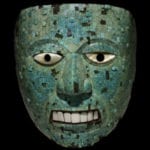 Crime
Crime  Crime
Crime  Technology
Technology 10 Hilariously Over-Engineered Solutions to Simple Problems
 Miscellaneous
Miscellaneous 10 Ironic News Stories Straight out of an Alanis Morissette Song
 Politics
Politics 10 Lesser-Known Far-Right Groups of the 21st Century
 History
History Ten Revealing Facts about Daily Domestic Life in the Old West
 Weird Stuff
Weird Stuff 10 Everyday Products Surprisingly Made by Inmates
 Movies and TV
Movies and TV 10 Actors Dragged out of Retirement for One Key Role
 Creepy
Creepy 10 Lesser-Known Shapeshifter Legends from Around the World
 Animals
Animals 10 Amazing Animal Tales from the Ancient World
 Gaming
Gaming 10 Game Characters Everyone Hated Playing
 Crime
Crime 10 Terrifying Serial Killers from Centuries Ago
 Technology
Technology 10 Hilariously Over-Engineered Solutions to Simple Problems
 Miscellaneous
Miscellaneous 10 Ironic News Stories Straight out of an Alanis Morissette Song
Who's Behind Listverse?

Jamie Frater
Head Editor
Jamie founded Listverse due to an insatiable desire to share fascinating, obscure, and bizarre facts. He has been a guest speaker on numerous national radio and television stations and is a five time published author.
More About Us Politics
Politics 10 Lesser-Known Far-Right Groups of the 21st Century
 History
History Ten Revealing Facts about Daily Domestic Life in the Old West
 Weird Stuff
Weird Stuff 10 Everyday Products Surprisingly Made by Inmates
 Movies and TV
Movies and TV 10 Actors Dragged out of Retirement for One Key Role
 Creepy
Creepy 10 Lesser-Known Shapeshifter Legends from Around the World
 Animals
Animals 10 Amazing Animal Tales from the Ancient World
 Gaming
Gaming 10 Game Characters Everyone Hated Playing
Top 10 Remarkable Early Human Relatives
Humans are the only Homos left standing – that is there are no other representatives of the Genus Homo left alive. Some of the other species that were our close relatives, like the Neanderthals, are familiar to most people. Others are lesser known but potentially just as interesting. The more we learn about our related species the more we are learning about what we have lost as Homo sapiens came to dominate the planet.
Top 10 Body Parts We Lost To Evolution
10 Neanderthals
Neanderthals, or Homo neanderthalensis, were either a sister species to modern humans or a subspecies of Homo sapiens. They emerged around 250,000 years ago and populations continued to live in isolation until about 28,000 years ago. This means that humans and Neanderthals coexisted for a long time. Obviously humans won out and for a long time it was thought that Neanderthals went extinct because they were too primitive to compete. When President Biden commented that anti-mask protests were “Neanderthal thinking” it showed how the low opinion of Neanderthals has persisted.
In fact the current Covid crisis has revealed just how influential Neanderthals were in the creation of modern humans. Humans and Neanderthals bred with each other a surprising amount. The amount of Neanderthal DNA in modern humans ranges from 0 to 2% – and it can have important effects today. Some people who inherited a Neanderthal gene can have worse symptoms from a Covid infection.
Modern researchers no longer think that Neanderthals as dim-witted cousins to humanity. We have discovered careful burials that may suggest a set of beliefs about the afterlife. They created art and used fire. We even know that they cared for sick members of their groups. Why the Neanderthals went extinct when they were so skilled is an open question.
9 Red Deer Cave People
Deciding what is and is not a human can be oddly difficult when all you have to go on are a few fossil bones. When scientists discovered human bones in Red Deer Cave in China they made a startling announcement that has proved controversial. An ancient lineage of human relatives lived in the area only 14,000 years ago.
The bones of the Red Deer Cave People showed that they were muscular, had thick skull bones, a flat face, large molars, and a smaller than expected brain size. These features pointed to human species that had been alive over a million years ago but somehow persisted until very recently. Unfortunately the bones were not preserved in a way that allowed DNA testing. Unsurprisingly the idea of them surviving so long has been contentious.
The red deer that gave the cave its name may have been hunted by the Red Deer Cave people because they were discovered alongside stone tools, suggesting a complex society. But there are those who doubt that these people are a separate species at all. Were they a subspecies, or just modern humans with some unusual physiology? More work remains to be done.
8 Homo luzonensis
Caves are great places to go looking for the remains of human ancestors. They offered shelter for early humans to live in but floods and rains can carry bones inside making them gather in the same area. It is unsurprising then that many human relatives have been found in caves. Just recently a new species turned up in a cave on the island of Luzon.
The Callao cave turned out to contain seven teeth and six bones that pointed towards a new species of human relative. Homo luzonensis lived there around 60,000 years ago. The bones and teeth show that they had a mix of modern and primeval features not usually seen together. The bones also show that they were smaller than modern humans, perhaps because they lived on an island – a phenomenon known as Island Dwarfism. The deer bones found in the cave have cut marks from tools but no tools were discovered which suggests that Homo luzonensis butchered their meat away from the cave and may have brought it inside to eat.
Because the Philippines is cut off from Asia by the sea the ancestors of Homo luzonensis must have made a perilous crossing to the island by boat.
7 Homo habilis
Homo habilis has a name meaning “skilful man,” but is sometimes called “handy man.” They earned this name by probably being the creators of some of the first stone tools in history. Living from about 2.3-1.6 million years ago it is clear that the human ability to craft tools actually long predates the rise of Homo sapiens.
The first remains of Homo habilis were a single tooth discovered in Tanzania in 1959 but it was only with the discovery of further bones that they were recognised as a separate species. The fossils show that Homo habilis had a markedly smaller brain size compared to later hominids but this does not seem to have impacted their ability to work with their hands. The stone tools they created were used for skinning animals and cutting meat.
We know lots about Homo habilis just from the bones we have discovered. The long arms suggest that Homo habilis lived at least partially in trees. We may even be able to tell that some were right handed from the way their teeth wore away, as if they pulled on food held in the right hand.
6 Homo erectus
Homo erectus was one of the most successful human species. Thought to have evolved in Africa around two million years ago they may have lived until 250,000 years ago in some parts of Indonesia.
The spread of fossil discoveries of Homo erectus show that they quickly spread outside of Africa with evidence of their habitation found across Asia. It seems that Homo erectus spread as environmental changes created new areas suitable for their survival. Part of the reason for their widespread habitation was the fact that they were at least partially carnivorous. Carnivores have to cover more ground to hunt and so are more likely to discover new hunting grounds.
The brow ridges that are strongly associated with early human species reached their largest size in Homo erectus. While some have thought these thick ridges may have helped protect the skull it is now thought that they may have helped with social signalling – much like modern human eyebrows today.
5 Homo ergaster
Closely related to Homo habilis were Homo ergaster. Both lived in Africa around 1.5 million years ago but Homo ergaster seems to have more closely resembled modern humans. Many remains suggest they could have been tall and slender, with some well over 6 feet tall. The size and shape of their pelvises show they could also give birth to babies with large heads, just like modern humans.
As well as being physically impressive they also had good technical skills. The ‘ergaster’ part of their name means ‘work’ and was given to them because of the large stone tools found associated with their fossils. Their tool use may have contributed to their lifestyle which involved travel across grasslands. Their body shape would have helped in the hot dry conditions they faced.
Unlike in some hominid species there does seem to have been a noticeable difference between males and females in terms of height. This may represent differing roles for males and females in their culture.
4 Australopithecus afarensis
Australopithecus is a slightly more distant relative than some on this list but the discoveries made about them revealed a great deal about the evolution of humans. When they evolved around 3.9 million years ago Australopithecus became one of the first primates to be able to walk upright for long periods of time.
While their bipedalism can be inferred from their skeletons a discovery made at Laetoli in Tanzania offered almost perfect proof of it. The site contains a series of track prints made in a layer of volcanic ash that fell 3.9 million years ago. While it is not possible to say for certain which species left the footprints Australopithecus is the most likely.
We also know that Australopithecus coexisted with other human relatives thanks to the discoveries made in a cave in South Africa. Researchers have recovered bones belonging to Australopithecus, Paranthropus, and Homo species that were all deposited within a few thousand years of each other 2 million years ago.
3 Denisovans
The ability to analyse DNA has revolutionised the study of species and revealed many startling discoveries. Where before a few bones may have been filed away in a museum drawer for decades and never correctly identified today they can be enough to entirely define a species. This was the case with the Denisovans.
With just a handful of bones and teeth available researchers managed to extract DNA that showed these bones belonged to a population of humans that were either a separate species or subspecies. According comparisons of this DNA the Denisovans were more closely related to Neanderthals than they were to modern humans. But this did not stop Humans and Denisovans interbreeding – in some modern populations as much as 8% of their genome could be derived from Denisovans.
One of the more surprising aspects of Denisovan life that we have worked out is that they were comfortable living at high altitude. It may be that the adaptations modern Tibetans have to live in the Himalayas are derived from Denisovan ancestors.
2 Homo naledi
In 2013 some cavers in the large cave system known as the Rising Star Cave in South Africa discovered fragments of hominid fossils. These were unlike anything that had been found before. In total over 1,500 bone pieces from at least 15 individuals were recovered. This is the greatest find of hominid fossils from any one location in Africa.
The fossils have been attributed to a single species called Homo naledi – from the Sotho word meaning star. Homo naledi seems to have had both modern and ancient features. The wrists and ankles look modern but the chest and small brain seem more common to older hominid species. It has been suggested that Homo naledi evolved parallel to modern humans.
One hotly contested aspect of the find has been the suggestion that the bodies were deliberately buried in the cave. To reach the deepest part of the cave anyone would have needed to bring light. Because of the absence of flooding it seems unlikely the bodies were washed into the cave. Did Homo naledi carry their dead into the cave for burial? More work needs to be done.
1 Homo floresiensis
When Homo floresiensis was unveiled to the world in 2004 they were quickly dubbed ‘Hobbits’ because of their short stature. Found on the island of Flores in Indonesia the adults stood just 1.1 m, or 3ft 7 inches, tall. Homo floresiensis also lived until relatively recently for a human relative – they seem to have gone extinct 50,000 years ago.
Homo floresiensis is thought to be a case of island dwarfism. Because islands often lack large predators animals tend to evolve into smaller forms. This is also helpful because islands can support more smaller individuals. This was also seen in a dwarf form of Stegadon, a type of elephant, found on the island. Homo floresiensis hunted these Stagadon as hundreds of Stegadon bones, some with butchery marks, were found alongside the human remains. Despite their brains being only one third the size of a modern human’s Homo floresiensis were skilled tool makers.
The arrival of modern humans in the region seems to coincide with the disappearance of Homo floresiensis. If humans are a lonely species today it may be because our ancestors forced many of our cousins to extinction.
10 Evolutionary Advantages Of Seemingly Weird Body Functions








